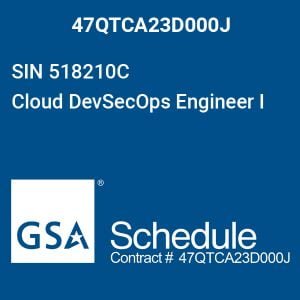IT expenses are an important, but a costly element of any company’s budget. Reducing these expenses can be tough as you have to contend with several priorities. Moreover, some of these costs appear to be fixed. By reading this article, you can learn how to optimize IT budges with OpEx.
Unlock the future of intelligent applications with our cutting-edge Generative AI integration services!
What Is OpEx?
OpEx stands for operating expenditures or operating costs. It is needed for your business’ daily maintenance and administration. Other terms for OpEx include operational expenses, operating expenses, and operational expenses. OpEx can include the following:
- Depreciation
- Amortization
- Sales commissions
- Employee health benefits, such as insurance and pensions
- Labor costs
- Maintenance costs
At some point, you will face the inevitable decision to optimize IT budget with either OpEx or CapEx. When facing this choice, more and more companies are opting for an OpEx solution.
When you optimize IT budget with OpEx procurement, it offers a wide range of business benefits. According to UC Berkeley’s cloud-centric paper, researchers found that OpEx helps reduce costs by up to 80%. Here is how you can use OpEx to optimize IT budgets:
1. Align with the Company’s Vision
From large firms to small businesses, every organization has their own strategic plan. Many of them are being implemented while some of they remain unutilized. Search and get hands on your business’ strategic plan and make sure that the maximum number of your line items from the budget aligns with your vision.
For instance, digital transformation is a trending topic in the corporate sector of the U.S. for many years with more than 27% of organizations referring to it as a “matter of survival”, whereas around 21% of them believe that they have finished implementation.
Creating and implementing an AP automation platforms can optimize IT budgets by saving money, boosting efficiency, and decreasing wasted hours. In addition, it also aligns well with the bigger strategic initiatives, such as digital transform. With this approach, your OpEx budget’s single line item is working twice as hard.
2. Enable Processes
When it comes to digital transformation, incorporating technology to your current process is an excellent way to increase your organization’s ROI. Analyzing from an AP perspective, the capability to digitize hard-copy invoices is an excellent start. Once you can store all your data in a digital format, it allows you to benefit from a wide range of possibilities for processing your invoices in an efficient manner.
Empower your workforce with the appropriate tools so they can perform their jobs. In this way, you can improve productivity while also reducing the dull work, such as manual data entry.
-
 GSA HACS Principal Security Architect$153.15
GSA HACS Principal Security Architect$153.15 -
 GSA IT Consultant$81.12
GSA IT Consultant$81.12 -
 GSA Cloud DevSecOps Engineer I$71.79
GSA Cloud DevSecOps Engineer I$71.79
3. Working with the Cloud
Almost 60% of organizations in North America have adopted public cloud – a five times increase from the mid-2010s.
Imagine a scenario: you buy large-scale hardware infrastructure or software licenses, which will be processed into the CapEx budget for meeting the criteria of long-term use. However, this also means that you would face more difficulties with the budgetary approval phase.
On the other hand, OpEx is a better option in this case to optimize IT budgets. If you buy a monthly subscription of a cloud service, it goes perfectly with the OpEx budget. Having an affordable monthly expense, utilizing a SaaS model for gaining access to critical systems of your business is a profitable strategy, especially if you compare it with a large-scale and permanent purchase.
This economical expense can also turn out to be useful in the budgetary approval procedure, when you show that there is no need to proceed ahead with a large-scale purchase with CapEx. Moreover, organizations can also improve their cash flow management by getting a monthly subscription.
4. Reduce Overtime and Labor
After an AP department gets completely busy and cannot handle the increasing workload, you can either go with a method that can help you do more with less or hire more accounts payable professionals.
Just think for yourself: what will someone from the c-suite would like to see?
- Hiring two more AP employees
- A monthly SaaS subscription
Anyone from higher management who looks such proposals doesn’t need to think much before making the final decision. On the other hand, from an operative perspective, AP automation lets you enter data manually, take advantage of automation voice matching, and reduce time involved in chasing down approvals. Companies have used OpEx to reduce their costs by more than 80% and increase their AP efficiency over two times.
5. Leverage the Latest Technologies
Leasing equipment or taking advantage of cloud computing, helps to make the most of the latest technologies. With a cloud computing agreement, companies can add services, upgrade equipment, and contract/expand utilization as per their requirements. It is easy and quick to implement these changes in an efficient manner, when compared to a CapEx environment wherein upgrades work on the basis of a purchasing cycle and need many years for implementation.
6. Attain Greater Stability
Opting for OpEx can support more consistent and stable IT budgeting. Companies that move a large portion of their IT budget to OpEx can make better estimations and improve the management of expenditures in various areas, such as equipment replacement and utilization. Purchasing equipment needs the personnel to estimate when the equipment will reach end-of-life, delay hardware replacement (if there is no available funding), and request additional funding for replacing equipment.
Final Thoughts to Optimize IT Budgets
Need help to optimize IT budgets with OpEx? Get in touch with us. Our experts will help you to improve your IT budgeting.
Further blogs within this Optimize IT Budgets with OpEx and Cloud Cost Optimization category.

